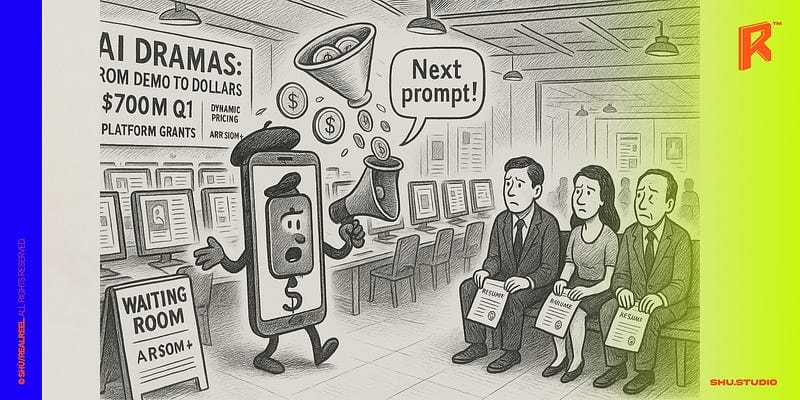AI Short Dramas Move From Demos to Dollars

After a year of splashy model showcases and proof-of-concept clips, AI-native short dramas are starting to look like a business. App-store data indicates in-app purchases for short-drama platforms approached $700 million in Q1 2025, nearly four times the prior year, with the U.S. responsible for roughly 49% of that quarter’s revenue, a signal that English-first packaging and pricing increasingly determine where the money lands.
The clearest demonstration that audiences will actually pay for AI-native stories came on Douyin. “Xing’anling Tales,” positioned as a front-free, back-paid release, tested dynamic unlock prices inside the platform, reporting offers that moved between roughly RMB 5.9, 2.9 and 1.0 in replicated user flows, and generated early six-figure revenue on Douyin’s native rails as views climbed into the tens of millions. The sums are modest by long-form standards, but significant here because the transactions occurred inside a mass-market distribution product rather than a crowdfunding lane.
Financing and recurring revenue are also taking shape. Shanghai-based CreativeFitting says annual recurring revenue surpassed $10 million after pushing its all-AI series “After Divorce: My Five Brothers Paved My Way to the Billionaire Throne,” followed by “Lost Before I Found You,” while positioning itself as a content-plus-tools stack built on its VFS creation workflow and the Reel.AI app. The company closed a multi-million-dollar Pre-A++ round this summer.

Platforms are putting real oxygen behind supply. In March, Douyin and ByteDance’s Jidream launched an AIGC short-drama program that combines traffic guarantees with cash support, up to RMB 5 million for flagship projects, aimed at making editor-led, prompt-literate pipelines repeatable.
Tooling continues to climb the quality curve. Kuaishou’s Kling just announced a “2.5 Turbo” update that improves motion control and prompt adherence while lowering costs, part of a broader race that includes Runway’s Gen-4, with an emphasis on character and scene consistency across shots, and OpenAI’s Sora, which remains gated around human depiction to mitigate abuse. Together, those constraints and upgrades map directly onto the continuity and physics problems that have historically broken immersion in paid arcs.
A second thread is vertical integration. Kunlun Tech open-sourced its SkyReels model family for short-drama creation earlier this year, a bid to align in-house tooling with distribution strategies that segment price-sensitive and pay-ready audiences. Sensor Tower’s category brief meanwhile lists DramaWave among the year’s fast-rising players, underscoring how model access and app economics are converging.
Creatively, the center of gravity hasn’t changed: heightened romance, revenge and fantasy continue to over-index because stylization forgives today’s edges. But the packaging looks increasingly commercial. Editors describe cadence-first assemblies with beats every 6–12 seconds, aggressive title/thumbnail testing and variable pricing around the mid-season spike, an approach that mirrors what platforms themselves are optimizing.
The open questions now are scale and reliability. Can editor-heavy “virtual studios” keep costs at a fraction of live-action while sustaining watchability on a weekly cadence? Investors are making bets that they can, provided the next wave of model releases settles camera control and scene logic. If that happens, genres that still feel uncanny today will tip into viable paid arcs tomorrow.
AI short drama is no longer a curiosity. The U.S. is already a revenue center; platform money is on the table; and the tools are good enough to support a commercial release rhythm. The winners will be the teams that package for platform realities, pricing, compliance and continuity, with the same rigor they bring to prompts.






